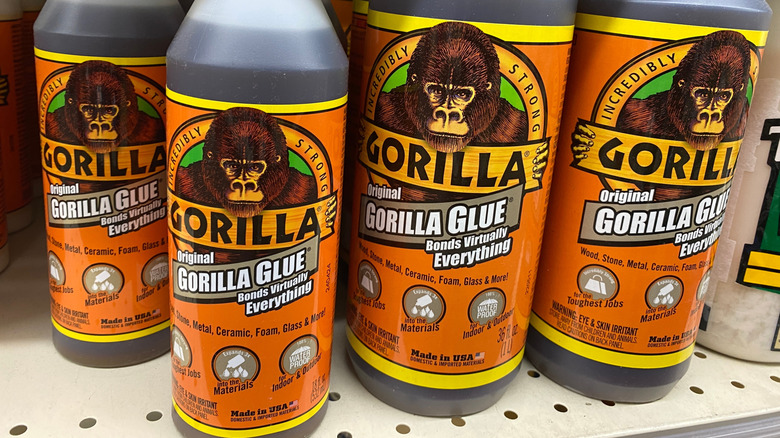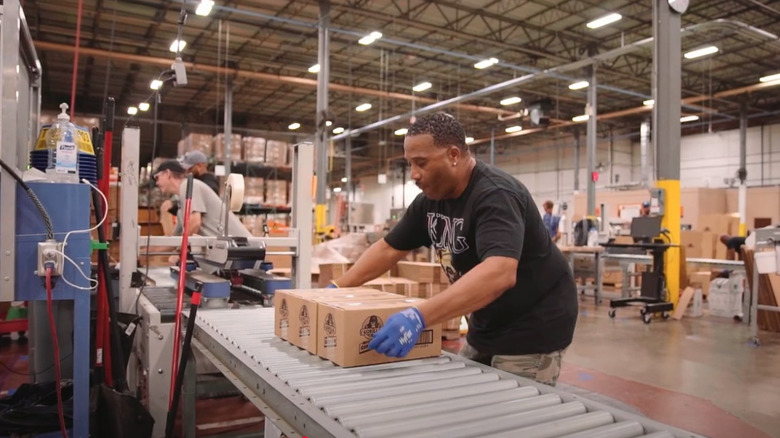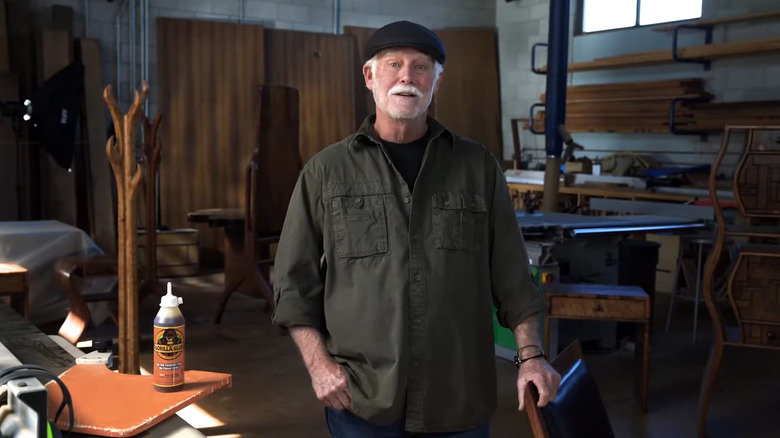Where And How Gorilla Glue Is Actually Made (And Why It's So Famous)
When you need to repair a broken toy or patch up a crack, you might reach for a bottle that promises a gorilla-strong hold. Gorilla Glue is a favorite adhesive among DIYers, construction workers, and crafters alike. While you may consider it an essential must-have glue to have on hand, you might not know exactly where it's made. You may wonder, is it made in China? The truth is the company manufactures all of its glue products right in North America. The company has a 700,000-square-foot facility in the Sharonville suburb of Cincinnati, Ohio. The resulting glue is famous worldwide for its affordability, ease of use, fast dry time, and versatility. It's not surprising the company reportedly processes over 30,000 cases of Gorilla Glue and other products daily. Though based in Ohio now, the adhesive's origins trace back to Europe and Indonesia.
The brand's most popular product is a moisture-reactive polyurethane adhesive, or the Original Gorilla Glue. The glue will adhere to virtually any material, including stone, wood, and glass, with a tough bond upon exposure to water. The firm hold sets in as a chemical reaction from the polyurethane's contact with a damp surface. During the glue's curing process, it expands to three or four times its original size. Clamping the mended pieces together for one to two hours while the glue cures creates a secure hold (though it may take 24 hours to fully cure). Once set, Gorilla Glue is 100% waterproof and able to withstand various conditions.
How Gorilla Glue is made and its claim to fame
Gorilla Glue's precise manufacturing process isn't shared with the public. Breaking down its chemistry, we know it's a single-component polyurethane adhesive that reacts to moisture, making it a polymer-based glue. These glues typically contain an alcohol called a polyol and an isocyanate, a reactive chemical. The combination of the polyol and the isocyanate causes a reaction that forms the polyurethane. What we don't know is the formula's exact ingredient quantities. Reading the product packaging reveals that Original Gorilla Glue is "Made in the USA with Domestic and Imported Materials." However, the packaging doesn't state the specific materials and their origin, nor does it appear on the safety data sheets. The glue contains at least one additive marked as a trade secret. Gorilla Glue creates a penetrating bond as it expands to three or four times the application. The expansion is a reaction from the release of carbon dioxide.
The secret to Gorilla Glue's success is that it delivers a very secure hold yet is super user-friendly that anyone can bond nearly any material with a quick treatment. Other comparable products might only be available in specialty shops, but this glue is one of the best affordable options available. Gorilla Glue is more accessible thanks to its presence in grocery stores, convenience stores, and other retail destinations. The easy access is likely a core reason for its popularity today, despite its humble beginnings in the woodworking industry alone.
Who invented Gorilla Glue
The company and its renowned glue began in the United States with a woodworker named Mark Singer. While visiting a furniture factory near Surabaya, Indonesia in the 1990s, he discovered workers using a moisture-cured polyurethane adhesive while constructing teak furniture. After witnessing its easy bond to wood, he brought back to America a few sample bottles to try in his workshop. Singer quickly saw its versatility and spoke with the Danish manufacturer about slightly changing the formula. Eventually, he bought the glue's North American rights and then encouraged its use among other woodworkers.
By 1994, the iconic Gorilla Glue brand was born, but it was still only widely used among furniture makers. In 1999, the Lutz Tool Company bought the brand after they saw its potential in mainstream hardware stores. They began manufacturing the adhesive as a consumer-facing product. After the runaway success of the brand, Lutz Tool Company changed its name to The Gorilla Glue Company to capitalize on its top product. Gorilla Glue's product line now features fabric glue, spray adhesives, super glue, and rubber cement.


